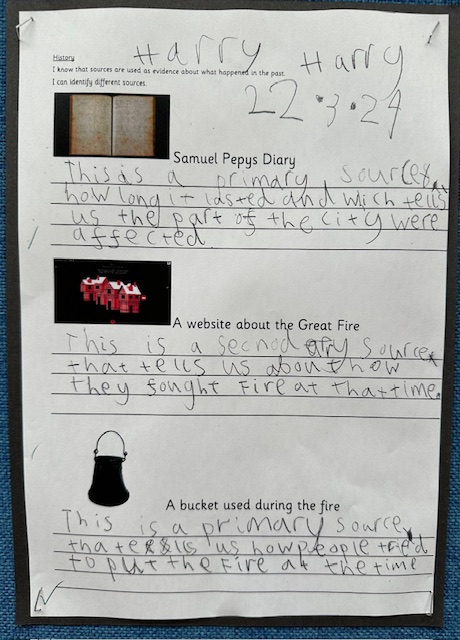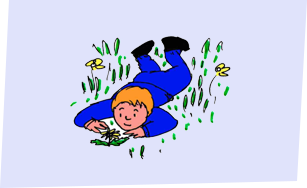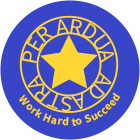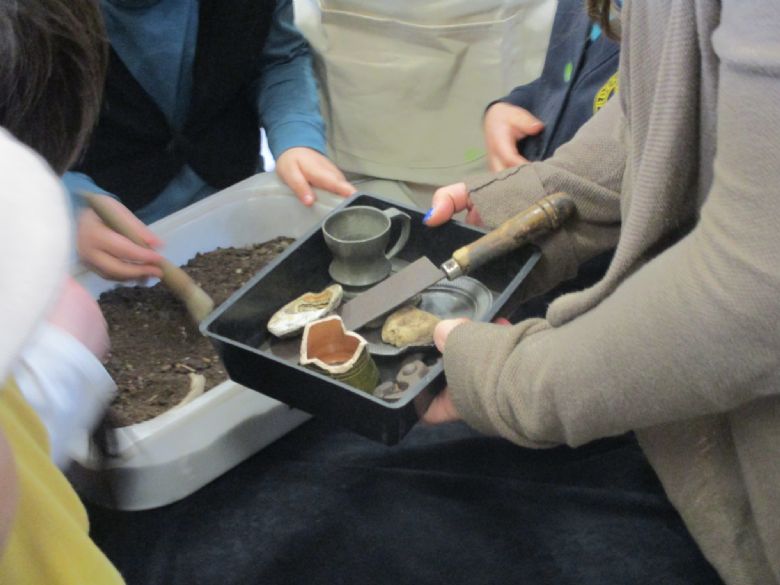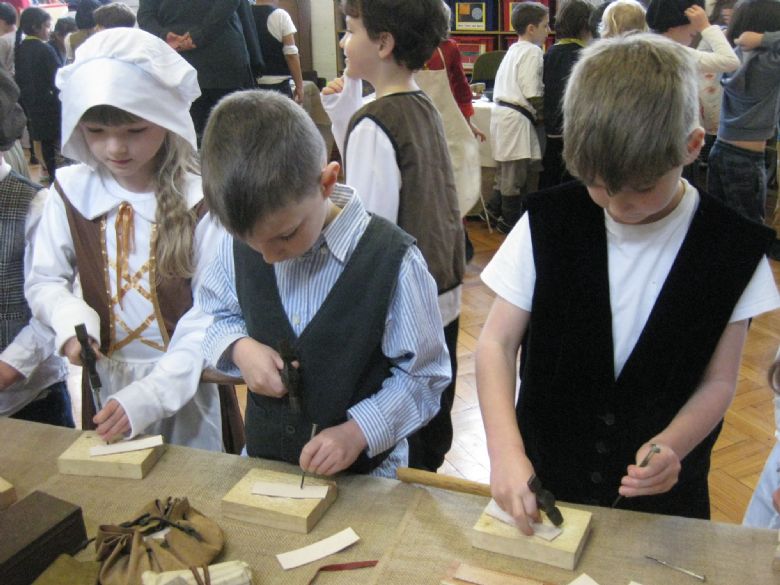History
Our children will develop their knowledge and skills through curriculum planning based on the requirements of the National Curriculum for History. Planning is carefully designed to be coherent and accessible, to enable children to make clear links with, and build on, prior learning and life experiences. We aim for our children to begin to gain a good mental picture of significant events and times in the past, and why key events happened.
They develop knowledge and understanding of significant people, cultures, environments and places from the past. They begin to develop an understanding of the impact people have had on our local environment and the wider world.
The children also learn the difference between primary historical sources (sources from a particular time period) and secondary historical sources (sources about that time period). They will learn how these sources can help us to find out about events that happened in the past.
This important learning provides the foundation for work as they get older about understanding bias, helping them to be more critical thinkers, and paying attention to where they get their information from.
language development
learning behaviours
We aim to foster our children’s intrinsic interest in, and enthusiasm for learning in History. We understand that our infant children love making connections and talking about significant events in their own lives, past and present, that can relate to significant events and people from the past. Our children show excitement about sharing their own stories. We recognise that this engagement fosters positive learning behaviours about stories from history.
We know that the children enjoy having the opportunity to share and collaborate through exploring paintings, photographs and artefacts from the past such as old local maps and toys; talking about important historical places and landmarks they have visited and sharing information about significant people in the news.
We will actively promote positive learning behaviours through including our animal mascots in medium term planning.physical activity
The children are active learners in history; they explore the local environment around Garden Suburb and other areas of London, they role play significant events through drama, explore significant artefacts, and make their own; they observe and collect data on field trips through drawing and taking photos.
We aim to foster practical engagement throughout the curriculum, because we know this enables our children to make good mental pictures of what history looks like and how things have changed over time. This helps them to build new knowledge on existing knowledge.
cultural capital
creative curriculum design and progression
Planning is carefully designed to be creative, coherent and accessible to the age groups of our children. This enables children to make clear links with, and build on, prior learning experiences, and to accumulate sufficient knowledge for future learning. The history units of work are intertwined with geography, enabling the children to locate places and provide contextual knowledge for how places have changed over time, and why. The humanities planning in turn, links to an overarching topic that helps the children make links between History, Geography and other curriculum areas.
Units are well-matched to meet the context of the children and have clear end points, supporting teachers to make explicit what is needed for pupils to achieve outcomes. Each lesson is deliberately constructed and resourced to ensure ‘in-built’ progression of knowledge and skills.
Visual sources and artefacts are used to support the children to talk, make connections with what they know already and remember their learning.
Opportunities to create and build on school made, collaborative timelines support the children to develop their sense of chronology. Exploring different sources supports the children to develop their understanding about how we know about what happened in the past, and how different sources give different information. This purposeful approach develops curiosity and higher order thinking and is designed and delivered to enable pupils to transfer key knowledge to long-term memory.If you were to walk into a History Lesson at Garden Suburb Infant School, you would see:
- All children engaged and enthusiastic to gain historical knowledge.
- Children who can work independently, and are also consistently co-operative; they take turns to discuss their learning, share and build on each other’s ideas.
- Children using subject specific vocabulary, appropriate to their age and stage of development, with understanding and confidence, to talk about different aspects of the topic.
- Children engaging with a range of primary and secondary sources of information, including real objects, photographs, maps, letters and texts.
- A sharp focus on reading and topic vocabulary embedded in lessons.
- Teachers demonstrating secure subject knowledge, teaching lessons which are explicitly adapted to be both ambitious and to meet the needs of pupils with Special Educational Needs.
- Teachers and support staff presenting information clearly, and encouraging appropriate discussion to learn key knowledge and concepts.
- Teachers and support staff helping children embed and use knowledge, not just memorise disconnected facts.
- A powerful learning environment, including practical and visual resources and displays which reflect their learning.
- Lessons which sometimes take the children outside the classroom.
